

We may earn revenue from the products available on this page and participate in affiliate programs. Learn More ›
Home Advice You Can Trust
Tips, tricks & ideas for a better home and yard, delivered to your inbox daily.
When the dog days of summer give way to autumn’s cooler temperatures, it’s time to get your house in shape for the change of seasons. Fall is the ideal time of year to work outside because there’s just enough of a nip in the air to make being outdoors pleasant, but not so much that you need a heavy coat. Before Old Man Winter comes calling, take advantage of these temperate days to tackle this seasonal to-do list.
Mulch Garden Beds
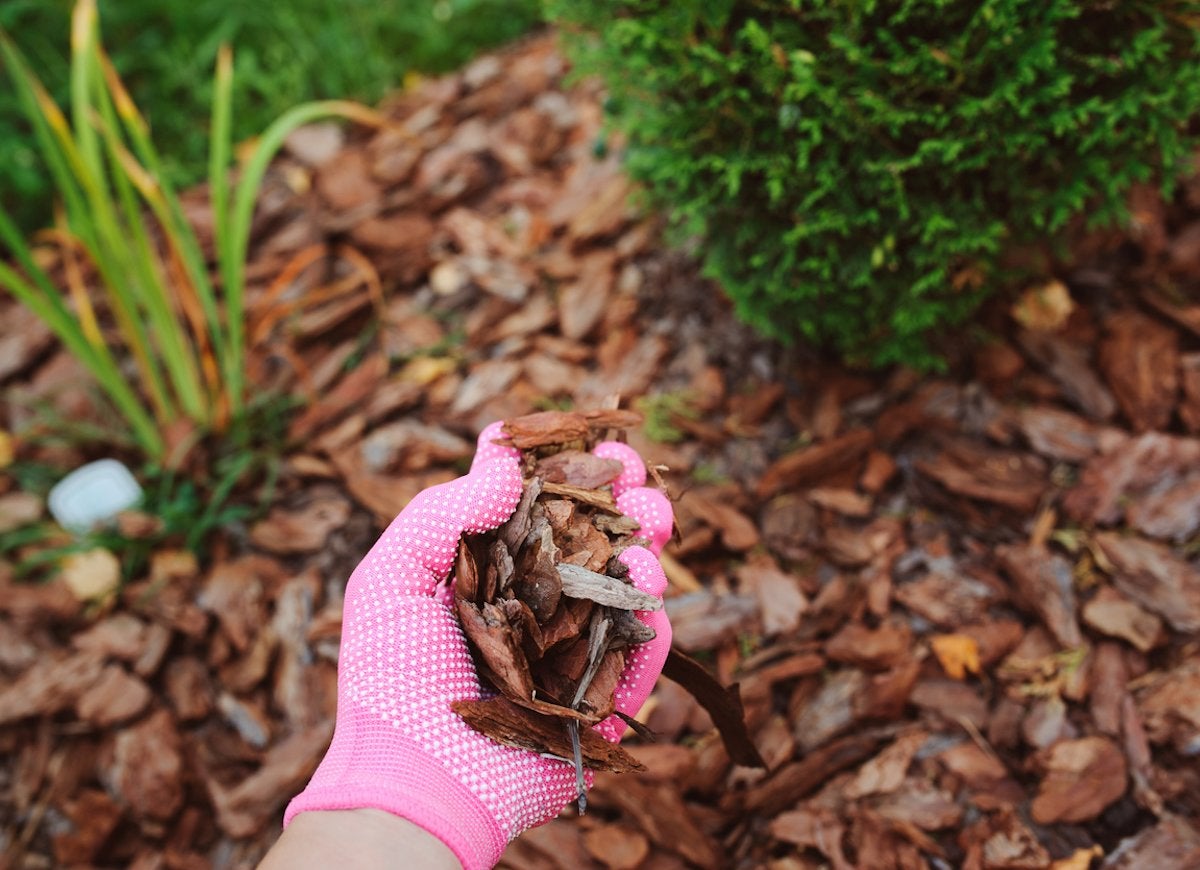
Photo: iStock
As the weather gets cooler, it’s time to put your garden to bed under a blanket of mulch. Protect annuals and perennials from the cold by covering them with a 2- to- 4-inch layer of organic material, such as shredded wood or wood chips, shredded leaves, or straw. For shrubs, trees, and rosebushes, wait to spread mulch until later in the season, when the soil is cool but not yet frozen.
Deadhead Garden Plants
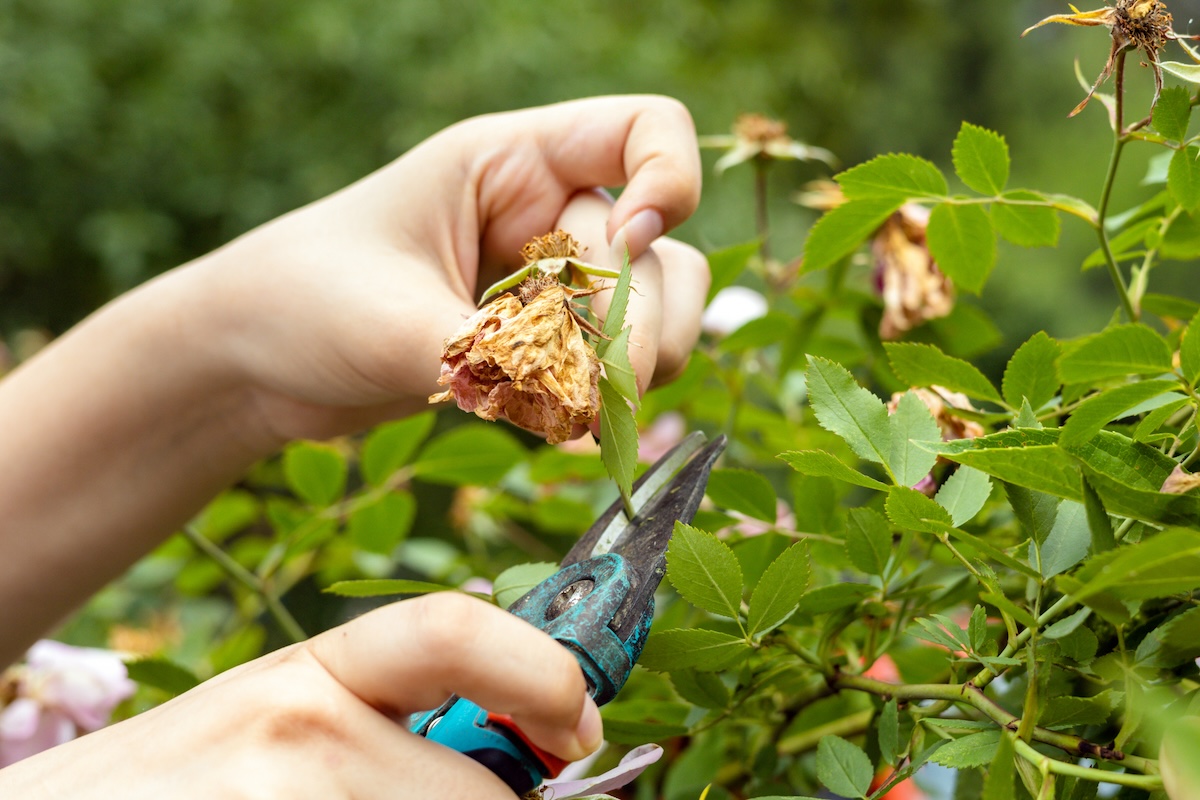
Photo: Anna Cinaroglu via Getty Images
Insects love nothing better than overwintering beneath dead flowers, leaves, and other plant material. Roll up the welcome mat by raking away fallen leaves, deadheading annuals, pruning perennials and roses, and clearing out your summer vegetables before the first frost.
Bring Container Plants Inside

Photo: iStock
Once nighttime temperatures sink below 50 degrees Fahrenheit, it’s time for your tender container plants to move indoors for the season. Before carrying them into your house or to a protected spot in the garage, first clip away any dead or damaged leaves and branches, and then check carefully for insects.
Plant Spring Bulbs
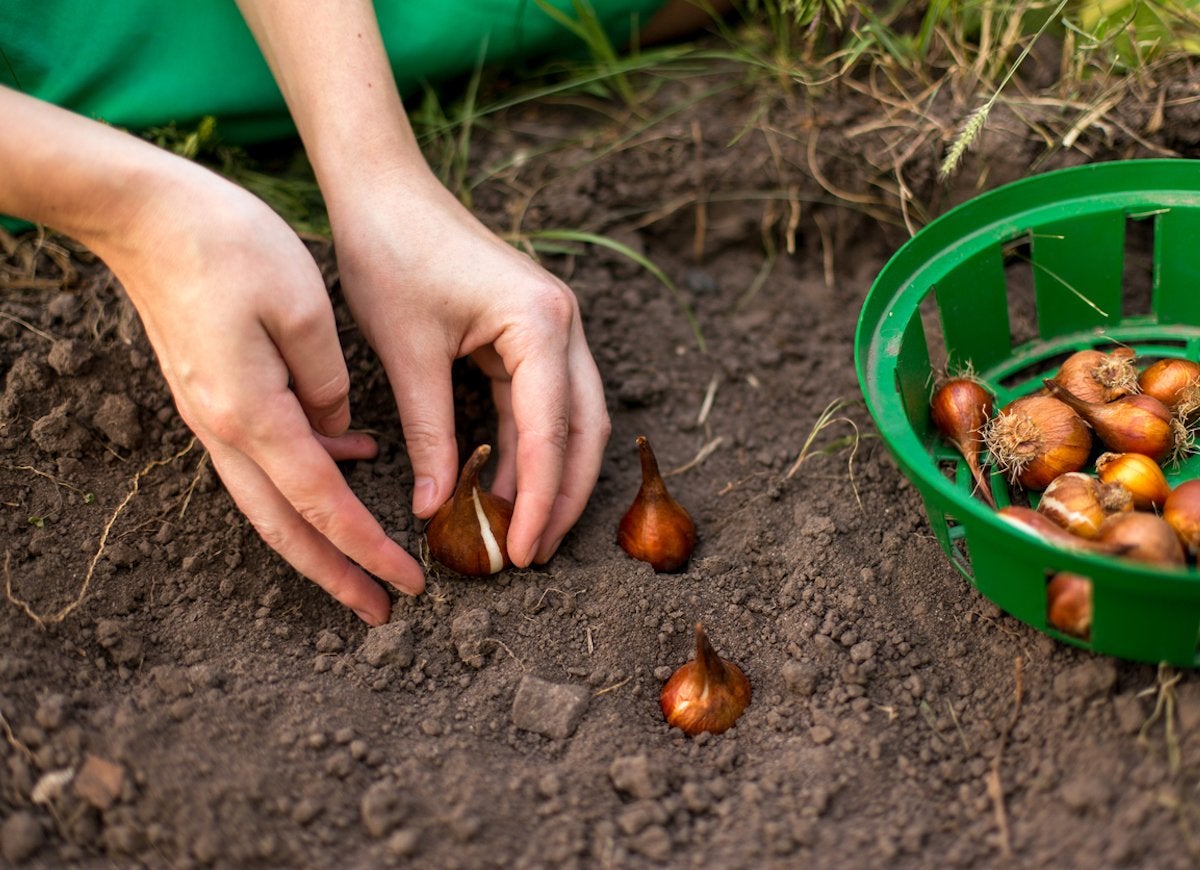
Photo: iStock
Nothing says spring is coming like colorful tulips, daffodils, crocuses, irises, and hyacinths, but if you want to enjoy these beauties in your spring garden, you need to plant bulbs in the fall. As a general rule, northern gardeners plant spring-blooming bulbs in late September through mid-October, while southern gardeners can wait until mid-October or early November.
Seal Drafts
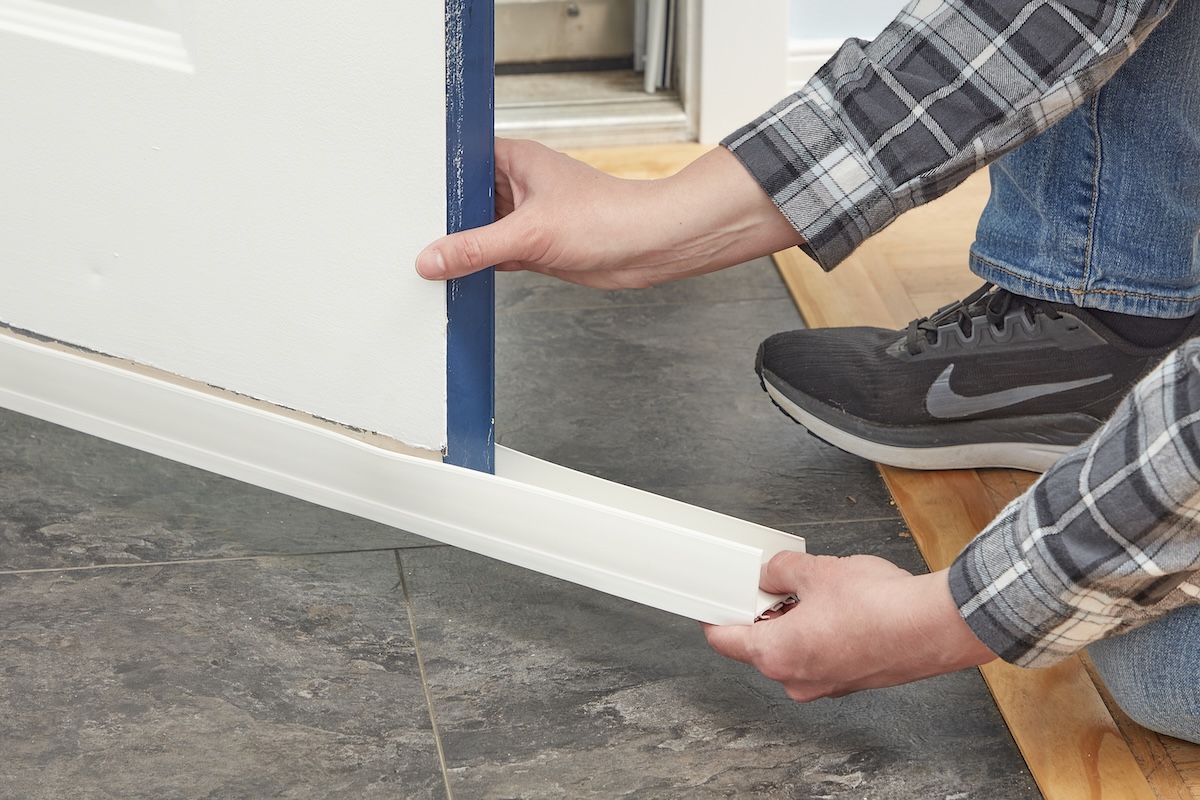
Photo: Tom Fenenga for Bob Vila
Keep warm air in and cold air out, and reduce your heating bills at the same time, by sealing up leaky doors or windows now. Check for drafts by turning off fans or air conditioners, then holding a lit stick of incense near doors and windows. If the smoke wavers or is sucked outside, you know you have a problem. The solution is simple: Caulk any cracks or chips around windows, and install weatherstripping to ward off drafts around doors.
Check Smoke Detectors
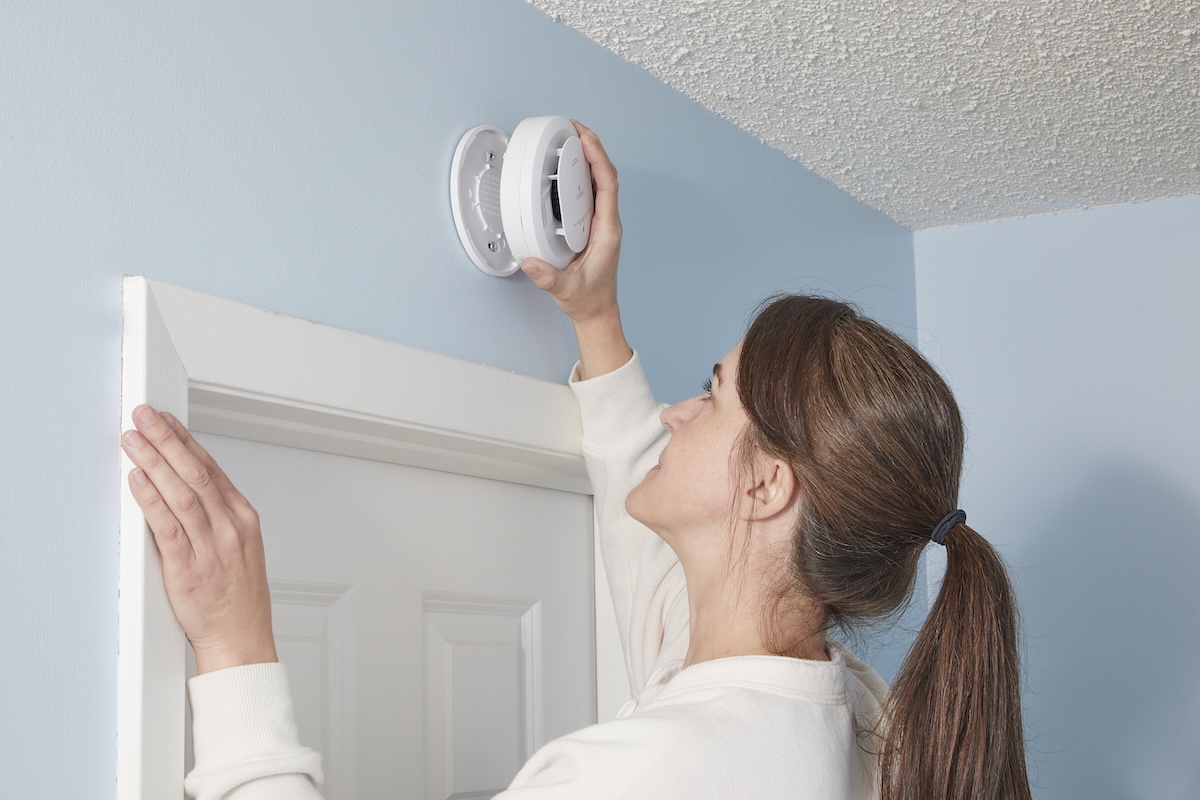
Photo: Tom Fenenga for Bob Vila
According to the National Fire Protection Association, three out of every five residential fire deaths occur in a home that either has no smoke detector at all, or a smoke detector with nonfunctioning batteries. Don’t let your family become a statistic. Check your smoke and carbon monoxide detectors at the very least twice a year, once in the fall and again in the spring.
Inspect the Fireplace
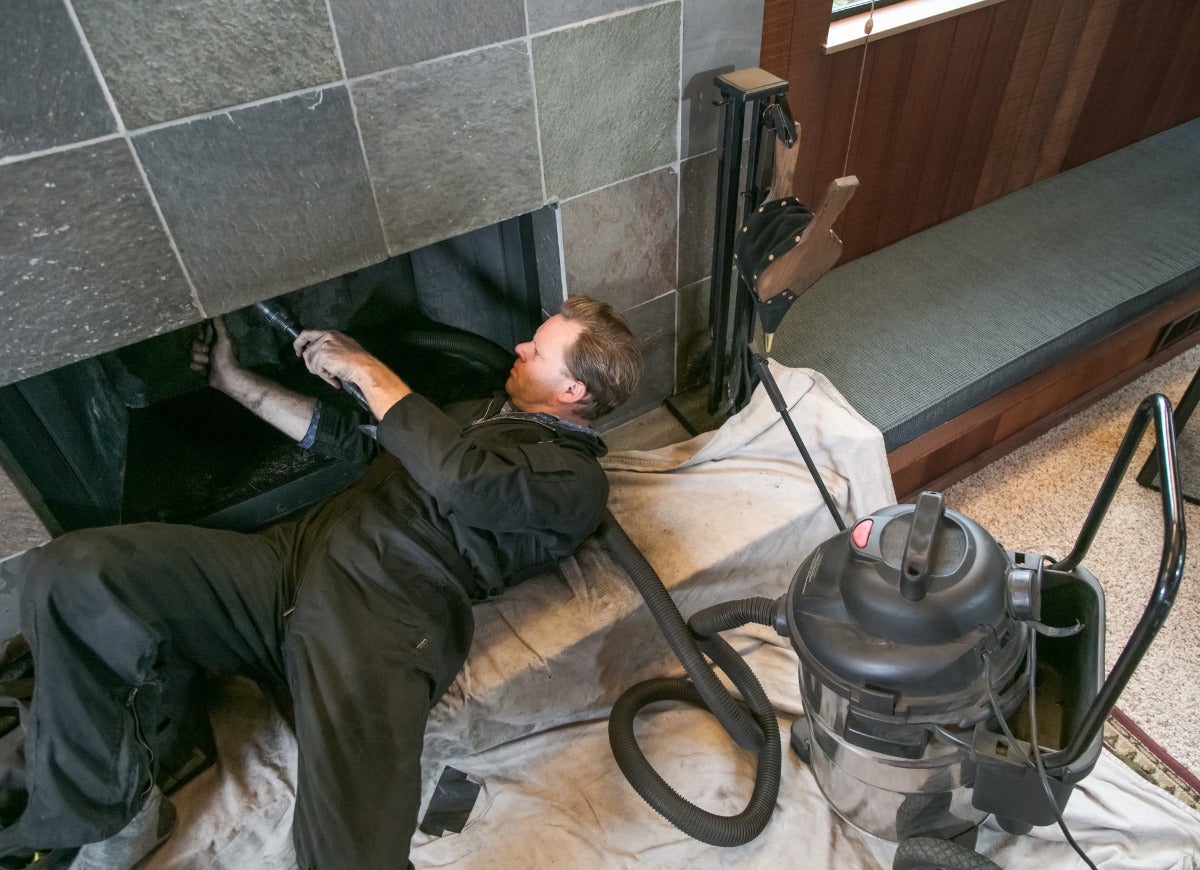
Photo: iStock
It’s a good idea to have your home’s chimney inspected and swept before fireplace season gets underway. This job is best done by a pro—expect to pay around $150 to $200 for a professional chimney inspection—but if you’re comfortable on the roof, you can do some preliminary work yourself. First, clear out any fallen leaves, birds’ nests, or other debris from the chimney, and repair any small cracks in the masonry with refractory cement, which is formulated to withstand high heat. Ensure that the damper moves smoothly and isn’t cracked, rusted, or warped, and then clean away soot, creosote, and ash.
Paint Your Entry Door Trim
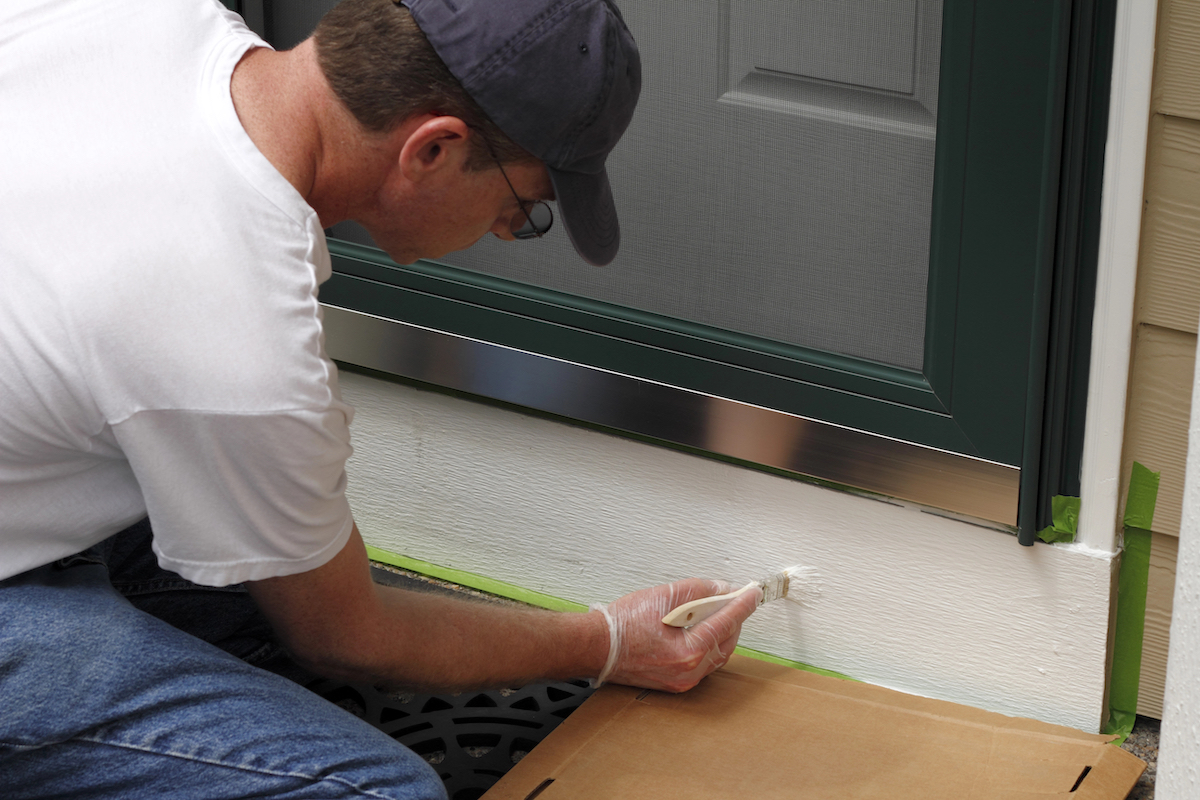
Photo: Coolpicture via Getty Images
If you’ve been thinking that your entry door could use a refresh, a new coat of paint on the surrounding door trim can help. Entry doors and trim are hard workers in most homes, and they have the scuffs and smudges to show it. Just painting the trim and cleaning the door will give the entry a more polished look. Clean the trim, let it dry, and then apply exterior paint. Most homeowners choose gloss or semi-gloss when painting trim. Two coats should be enough to protect the trim and keep it looking fresh for a year or more, depending on the weather and how busy your household is.
Reseed the Lawn
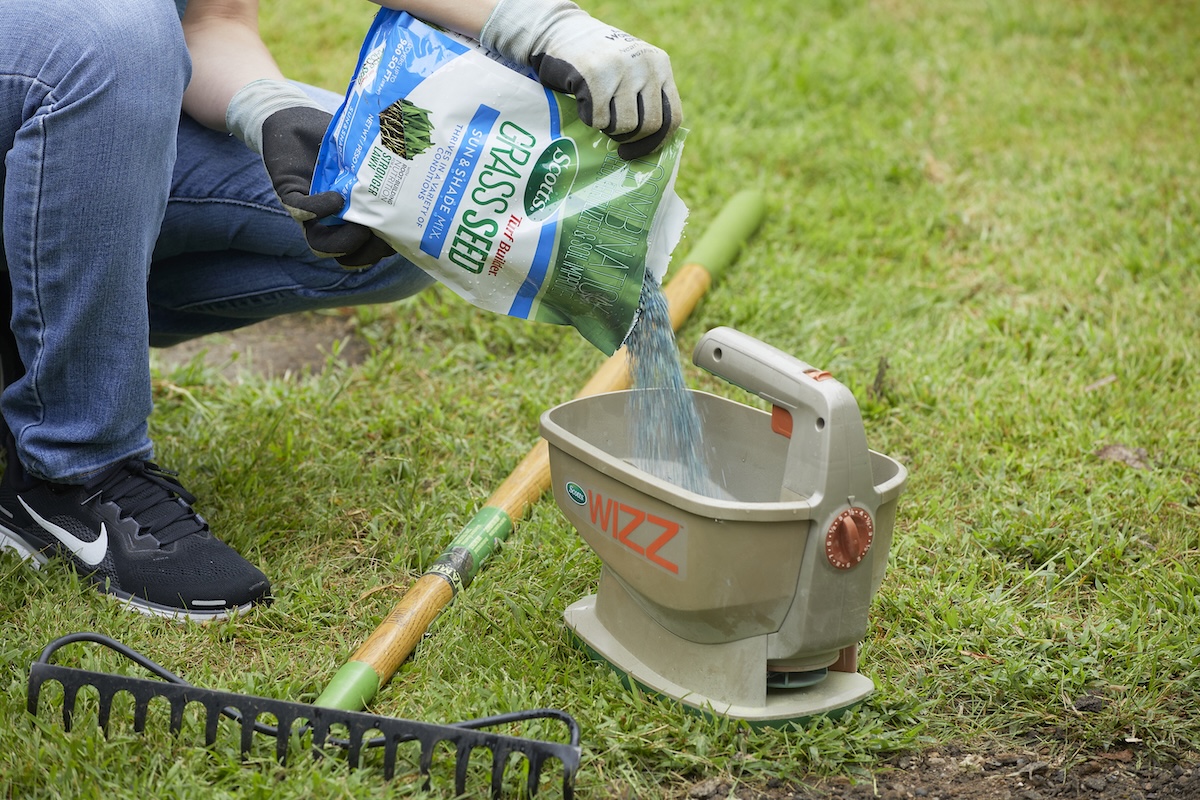
Photo: Tom Fenenga for Bob Vila
Want your lawn to look its best come springtime? Then sow grass seed in early through mid-fall. Reseeding the lawn gives gardeners in cold-winter areas a head start on spring. As the weather warms up, the grass will germinate, crowd out weeds, and develop a strong root system before the high heat of summer. If you live in a warm-winter region and want to keep your grass green all season long, sow annual ryegrass in the early fall. This quick-sprouting grass will look great through the chilly months and then die down once higher temperatures return in the summer.
Seal the Driveway
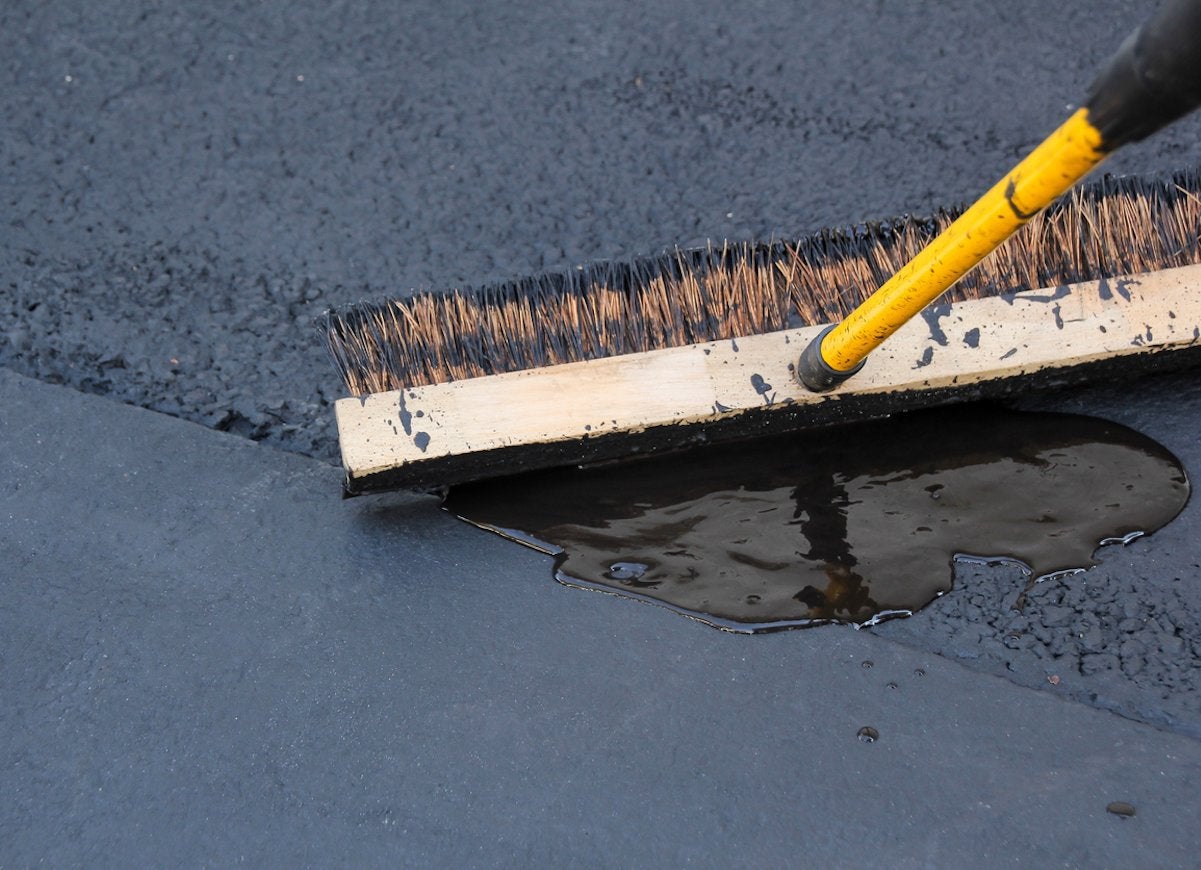
Photo: iStock
If you have an asphalt driveway, reseal it in the fall when temperatures are between 50 and 70 degrees Fahrenheit and no rain is in the forecast. For most areas, that means late September to early October. To start, sweep away dirt, leaves, and other debris from the asphalt, and then pour asphalt sealant over the driveway. Using an asphalt squeegee, evenly spread the sealant across the driveway’s entire surface. Let the sealant cure for at least 24 hours before parking on the driveway.
Inspect the Roof

Photo: RyanJLane via Getty Images
Winter can be hard on your roof, when rain, snow, freezing temperatures, and high winds all take their toll. That’s why fall is the best time to make sure to inspect your roof and complete any necessary roof repairs before cold weather sets in. You can hire a professional for this service or, if you’re up to the task, do it yourself.
Buy a Better Rake
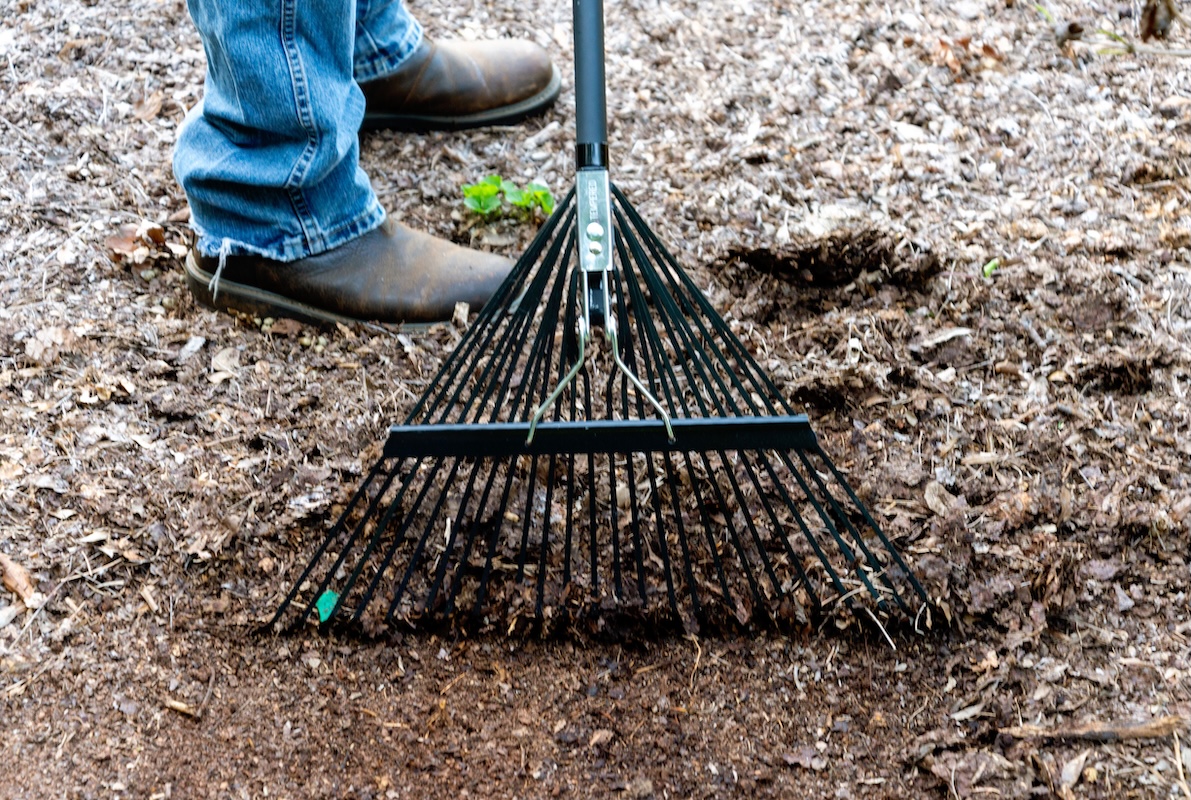
Photo: Debbie Wolfe for Bob Vila
Autumn means raking leaves, and raking leaves can mean back pain. Make the job easier on yourself by buying a good rake. The right one is long enough so you don’t need to bend over, has flexible yet durable tines to easily scoop up debris, and has a comfortable, ergonomically designed grip so your hands don’t feel the strain. Our researched guide to the best leaf rakes contains some terrific options, whatever your needs and budget.
Organize the Mudroom

Photo: New Africa / Adobe Stock
In most regions, fall brings rain—and a parade of muddy shoes. Get your mudroom ready for the season by setting out a large mat to absorb water and a tray to hold wet, muddy boots and shoes. If you don’t already have one, add a bench where you can sit and pull on your boots, and consider including a coat rack or wall hooks to hold jackets, umbrellas, and scarves.
Plant a Tree
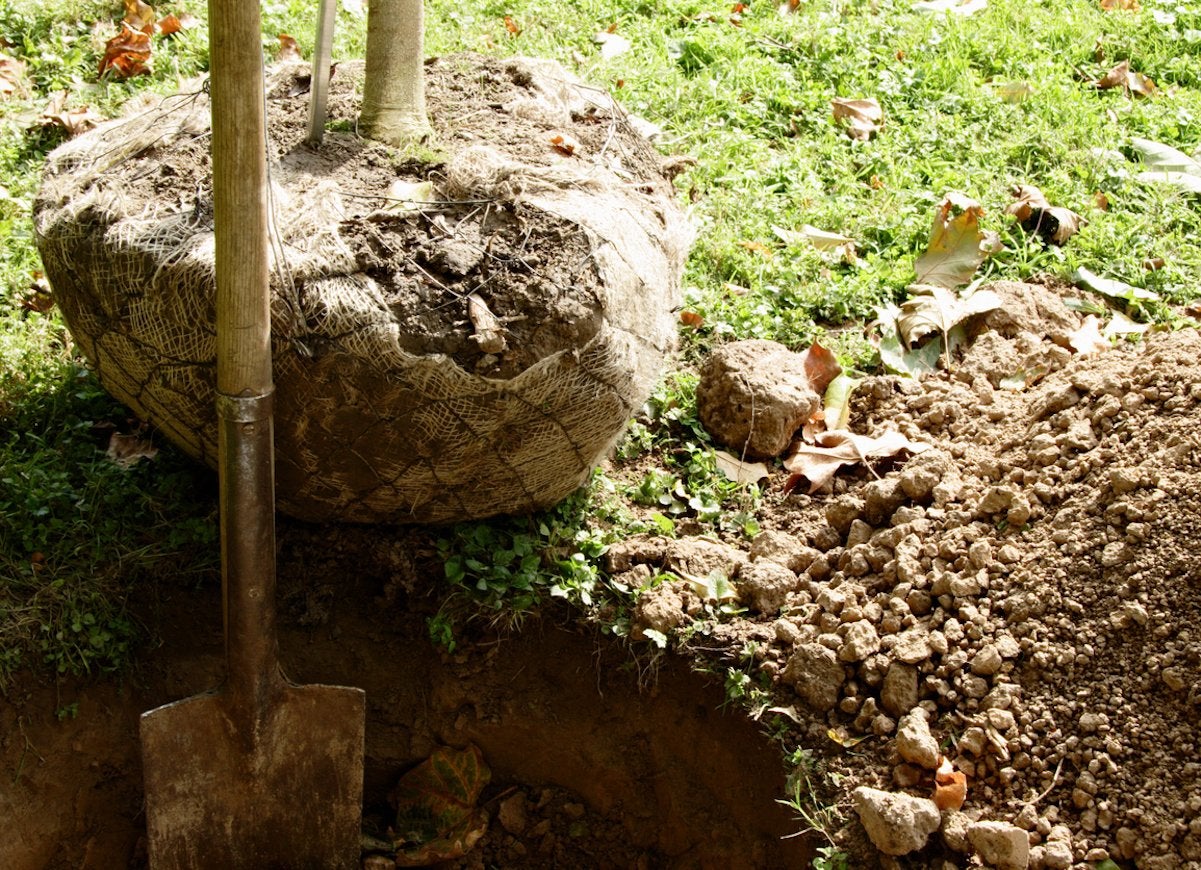
Photo: iStock
As they say, the best time to plant a tree was 20 years ago, and the second best time is now. If “now” happens to be autumn, you’re in luck: The cooler temperatures and moisture help the tree establish roots before the hot and stressful summer weather.
To ensure success, mulch your newly planted tree to keep the roots insulated. Water regularly if there’s not enough rain, but don’t fertilize until spring. Avoid heavy pruning, other than trimming away any broken branches. And if a severe cold snap is in the forecast, wrap a blanket or piece of burlap over the tree for a little extra protection while it gets established.
Create a Command Center

Photo: Pottery Barn
With summer fun in the rearview mirror, fall is the time for getting back to business. Creating an organization HQ for the whole family is a great way to help you stay on task. Put it in a central location like the kitchen, mudroom, or back entryway, where the whole family can see it.
Include a large wall calendar or weekly schedule, a dry erase board for appointment reminders or shopping lists, and a bulletin board for important announcements or incoming and outgoing school forms. If your family uses a chore chart or meal planning chart, this would be the place to put it. Set up caddies to collect keys and other daily necessities so they’ll be easy to find and won’t clutter up the rest of the house.
Drain Your Water Heater
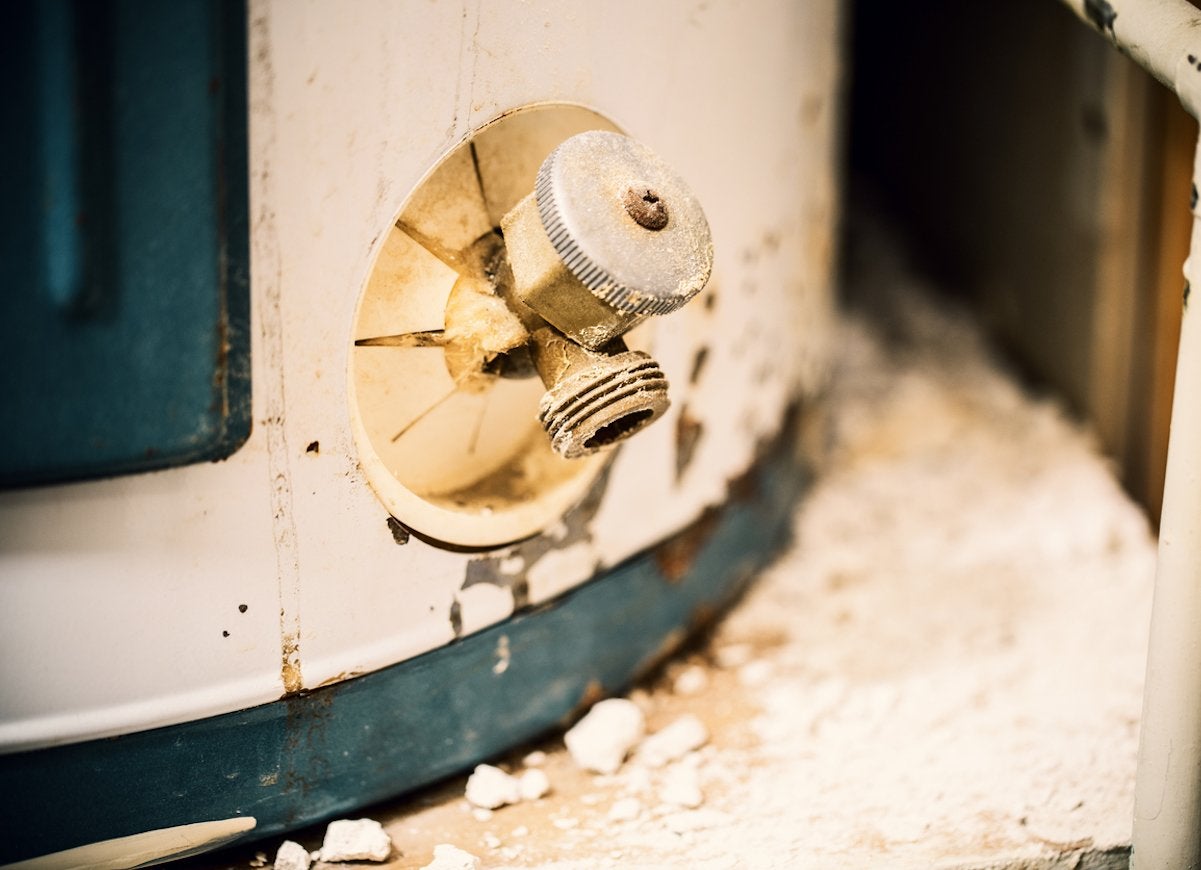
Photo: iStock
Drain your hot water heater to remove accumulations of lime and other minerals that naturally occur in your tap water. When left untreated, this buildup can keep your appliance from functioning its best and put your system at risk for leaks and other problems. It’s an easy enough job to do yourself, but if you’re not confident in your DIY abilities, call a pro to do it for you. Simple though it may seem, this one task can lengthen the life of your water heater and prevent the system from malfunctioning down the line.
Prevent Mice From Moving In

Photo: Peyker / Shutterstock
As temperatures drop, mice and other pests will be looking for a warm place to bunk, which is all well and good unless they choose your home as their winter retreat. Stay pest-free by doing a walkabout around the exterior and through the interior of your house, plugging any potential points of entry with caulk or steel wool. Keep in mind that mice can enter your home through a dime-size hole, so pay attention to even the smallest cracks.
Put Away Patio Furniture
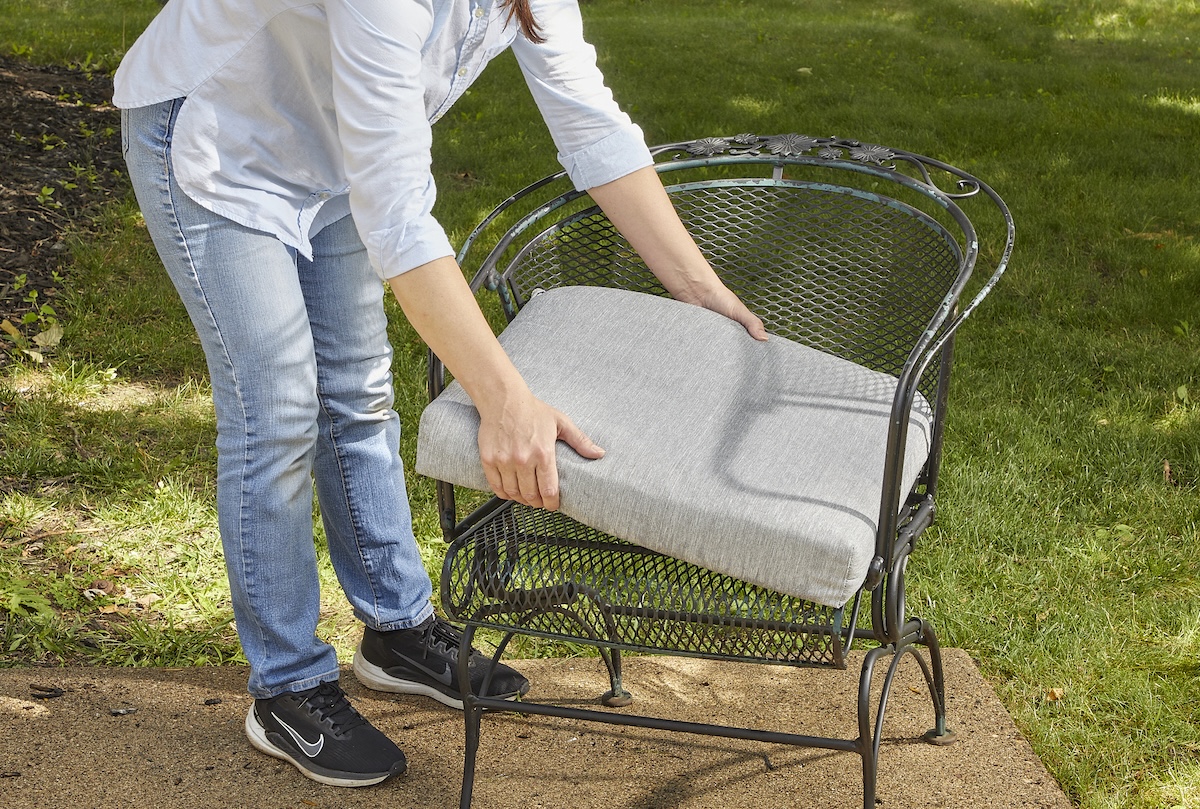
Photo: Tom Fenenga for Bob Vila
Fall leaves and winter snow can cause your patio furniture to fade, stain, and rust, so protect it by covering it with outdoor-rated patio furniture covers or placing it inside your shed, garage, or screened porch. Before you stow it for the season, give patio furniture a proper cleaning with mild soap and water to remove dust, pollen, and mold. Treat wicker with lemon oil to keep it moisturized over the dry winter months and protect it from mildew.
Clean the Grill
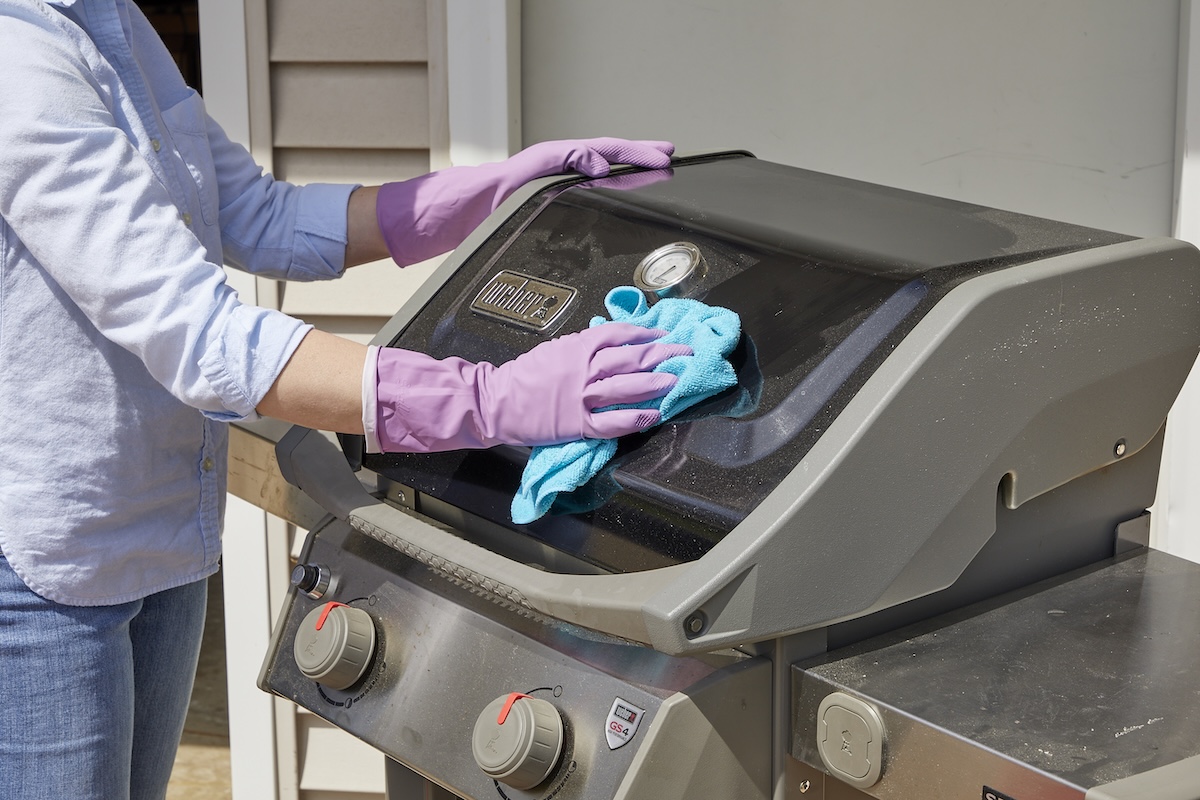
Photo: Tom Fenenga for Bob Vila
Soak and scour the grates, clean under the hood, remove any foil or food particles from the interior, and wipe down the exterior. When foul weather moves in for good, you can quickly cover the grill and store it for the season.
Maintain Your Mower
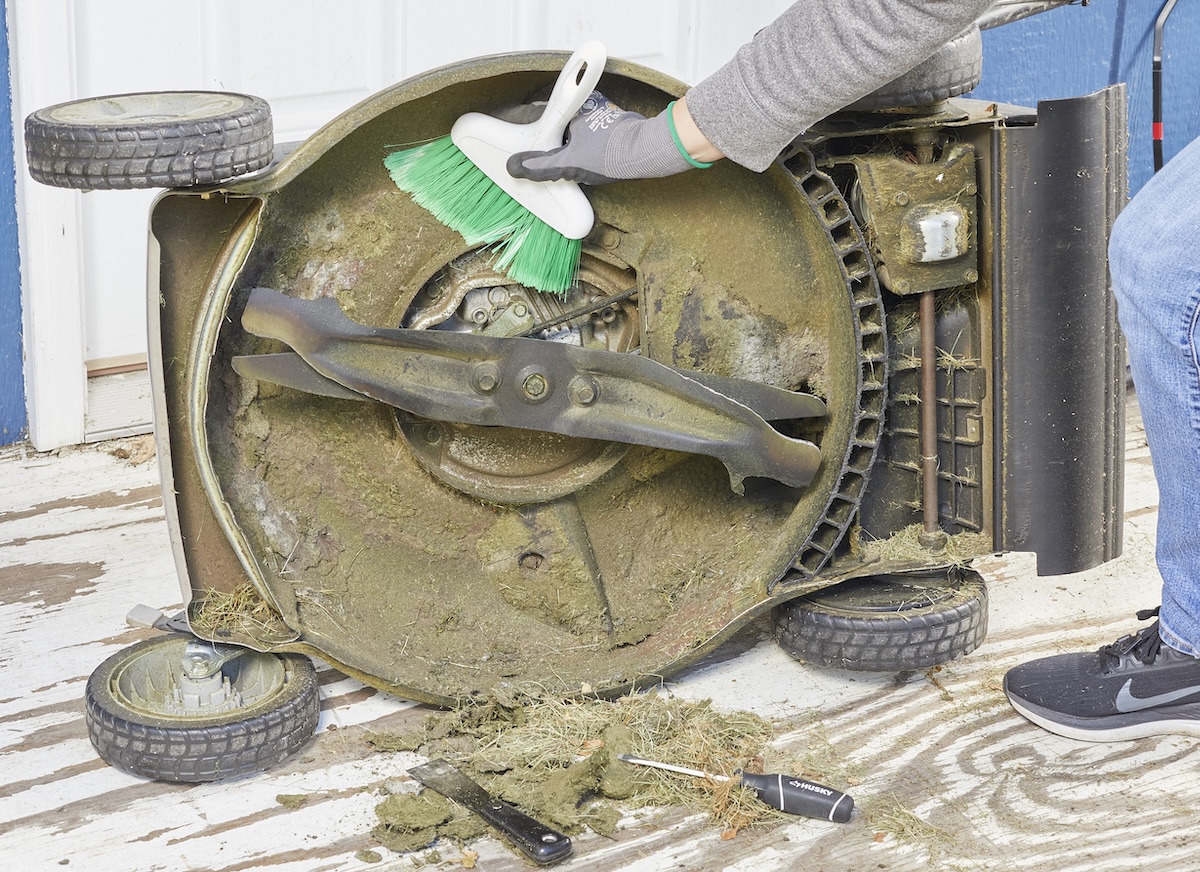
Photo: Tom Fenenga for Bob Vila
Keep mowing your lawn in the fall until the grass stops growing. Then, when it’s time to put it away for the season, make any necessary repairs the lawn mower to ensure that it will be in good working condition when you pull it out again in spring. Wipe away any grass or other debris that clings to the machine, and consider having the blades sharpened by a professional. If you have a gas lawn mower, use up the last of the gasoline in the tank or add fuel stabilizer to prevent damage (check the manufacturer’s instructions).
Aerate Your Lawn
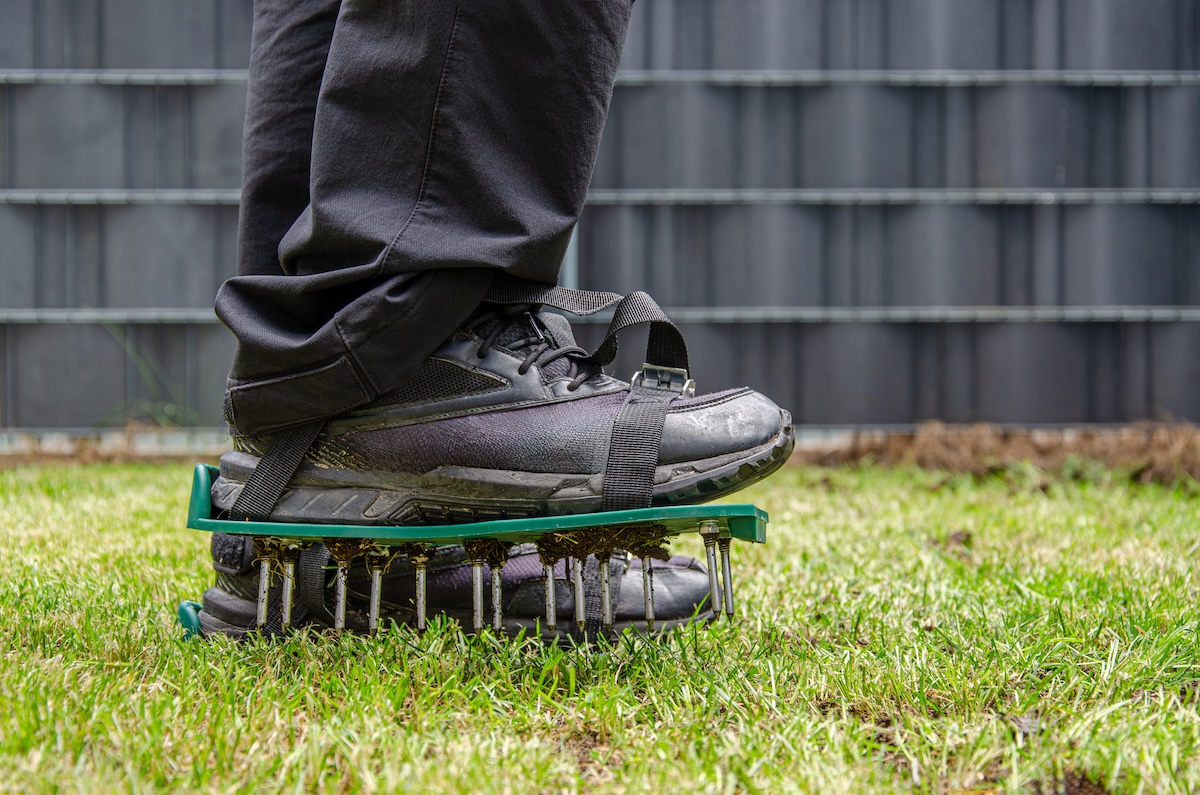
Photo: Nadja Abele / 500px via Getty Images
If your lawn receives a lot of foot traffic, it could be at risk for soil compaction, a condition that prevents the proper circulation of air and nutrients. To keep your turfgrass nourished, aerate cool-season grasses in fall by using a spike or plug aerator (available for purchase or rental at many home centers). Before you aerate the lawn, make sure the soil is moist but not soaking wet, because it can be difficult to aerate dry soil.
Feed Your Turf
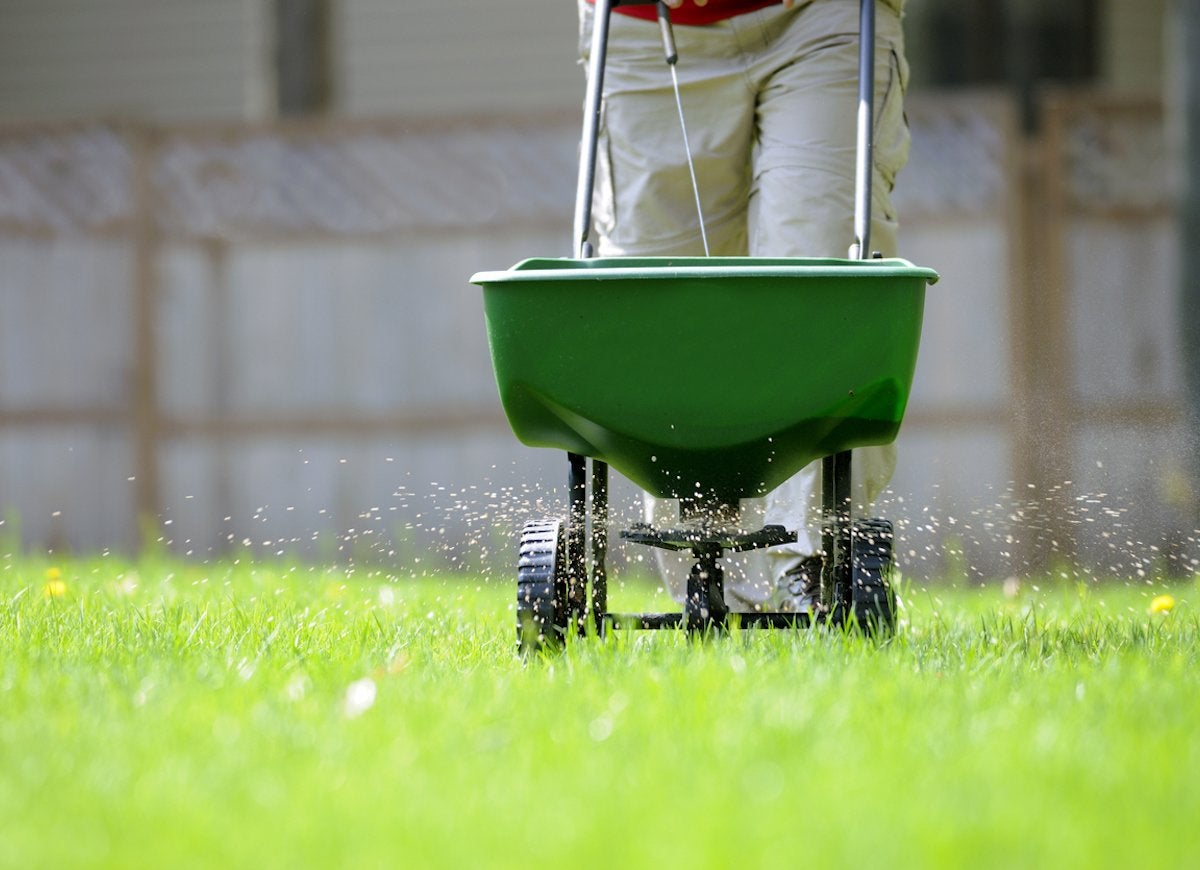
Photo: iStock
Cool-season grasses, like bluegrass and tall fescue, benefit from a fall application of fertilizer. Fertilize your lawn with a slow-release formula about 1 week before you mow for the last time in the season. High-nitrogen formulas that offer winter weather protection are helpful in colder climates.
Clean Your Rain Gutters
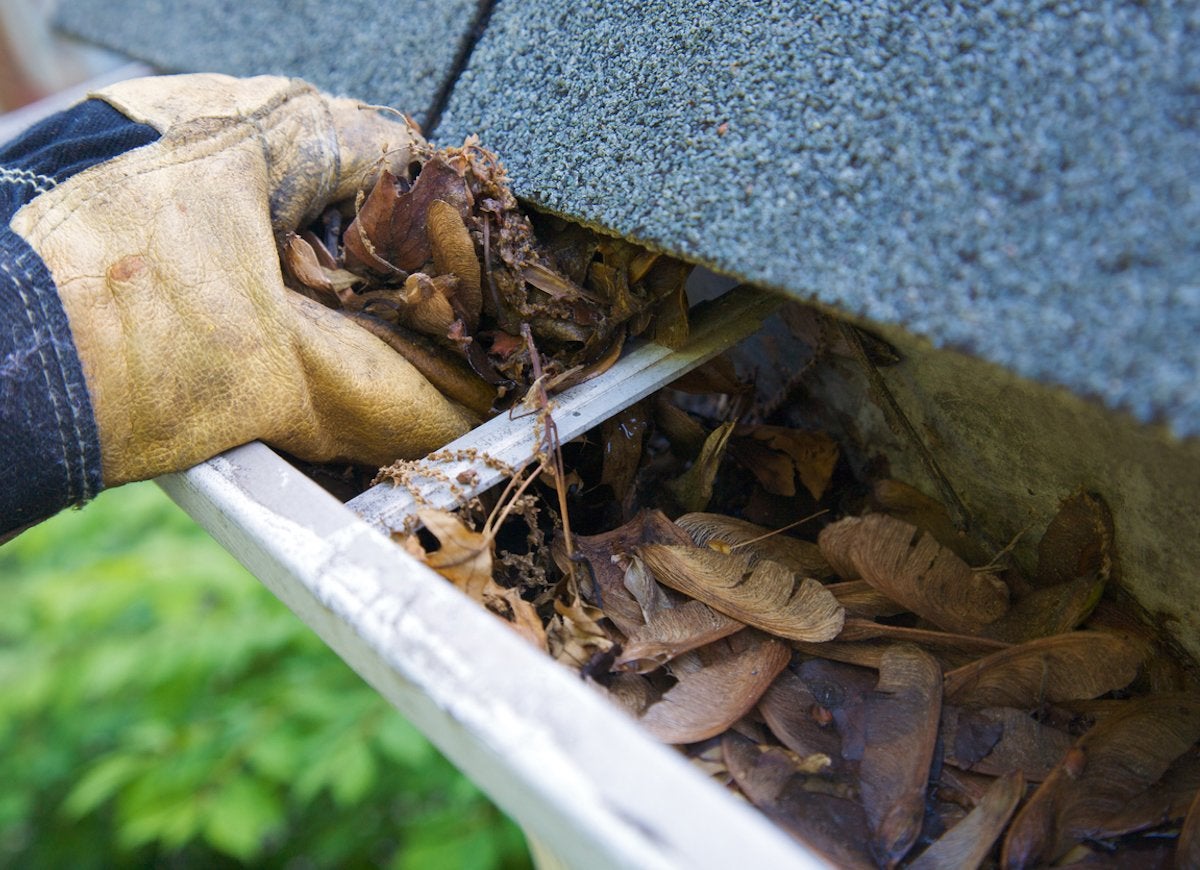
Photo: iStock
That stunning fall foliage may look good on the trees in your front yard, but when those leaves drop they can make a mess of your gutters. More than unsightly, leaves and other debris can clog the gutters, posing a real hazard in winter when rain and snow thaw and freeze inside gutters and form dangerous ice dams.
Protect your home from damage by removing leaves, sticks, and other debris from gutters now, and consider installing a leaf guard to keep your rain gutters clean with very little effort on your part.
Install Storm Windows

Photo: iStock
Button up the house and get ready for windy winter by swapping out your window screens for storm windows (if you have them). If you don’t have storm windows, particularly if you have vintage single-pane windows that you’re trying to save, consider installing them.
Storm windows offer an additional layer of insulation against cold weather and drafts, help keep your home more comfortable, and can help lower energy bills.
Have Your HVAC System Serviced
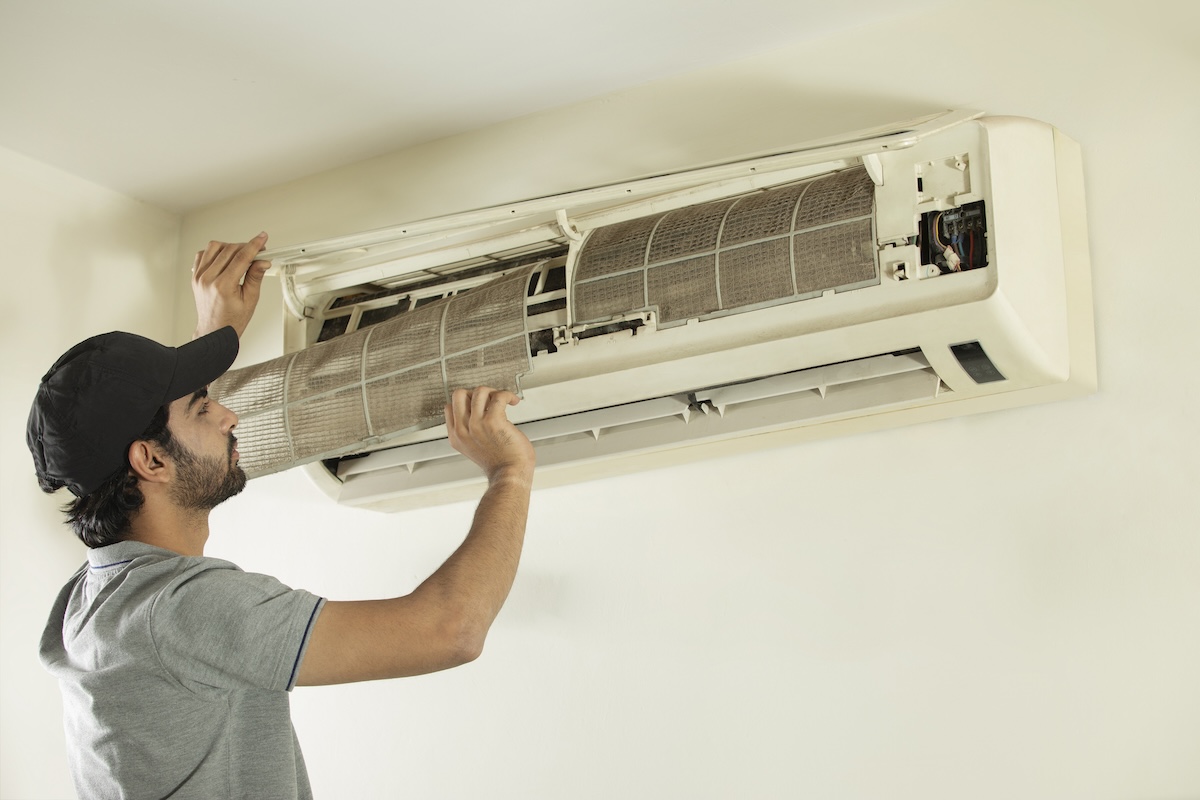
Photo: iStock
You don’t want to wait until snow is falling and frigid winds are howling to discover that your home’s heating system is on the fritz. Call a pro to come out and evaluate your heating system now. If the HVAC specialist detects any issues, have them fixed promptly to save yourself from a potentially chilly disaster later in the season.
Change the Direction of Your Ceiling Fan
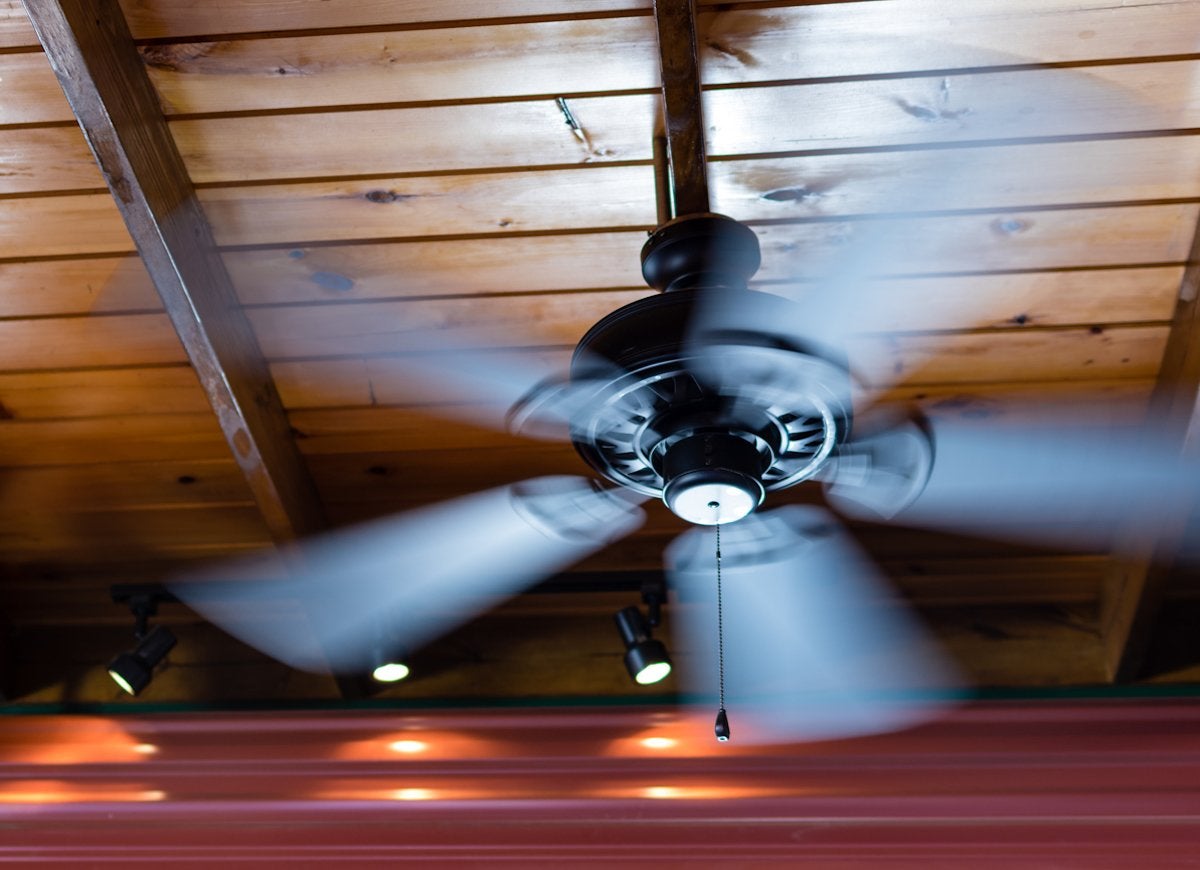
Photo: iStock
It may seem counterproductive to turn on a ceiling fan during the coldest months of the year, but a ceiling fan helps maintain comfortable temperatures even in the winter. Starting in the fall, set your ceiling fan to rotate in a clockwise direction (opposite the operating ceiling fan direction in summer), and run it on low speed to create an updraft. This tactic draws the room air up and forces the warm air near the ceiling down and through the room.
Drain Garden Hoses
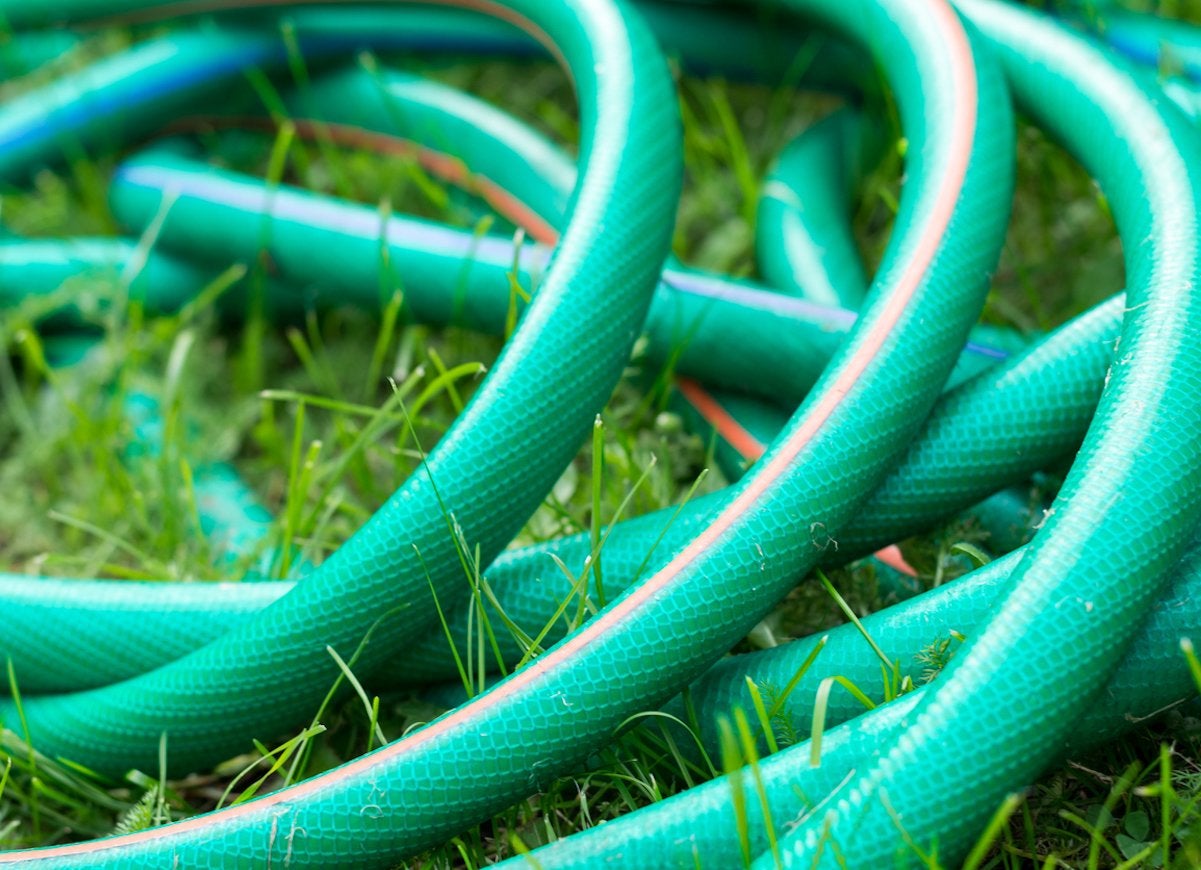
Photo: iStock
Because water expands as it freezes, it’s important to disconnect and drain garden hoses before temperatures drop to prevent them from bursting or leaking. Be sure to disconnect hoses from the outdoor spigots to which they’re attached; store hoses in a covered area like the garage or a tool shed to protect them from harsh weather. Turn off and drain your sprinkler system and shut off your outdoor faucets before nighttime temperatures dip below 50 degrees Fahrenheit.
Trim the Trees

Photo: Corinna Kern via Getty Images
It’s easier to identify dead limbs before your trees drop their leaves, so early fall is a good time to trim back dead branches. Trimming your trees now is more than an aesthetic choice, and doing so can protect your home from damage. In freezing conditions, dead limbs can become heavy with ice and break off, ending up on your roof or lawn, or posing a safety issue for family and passersby alike.
Clean and Cover the AC Unit
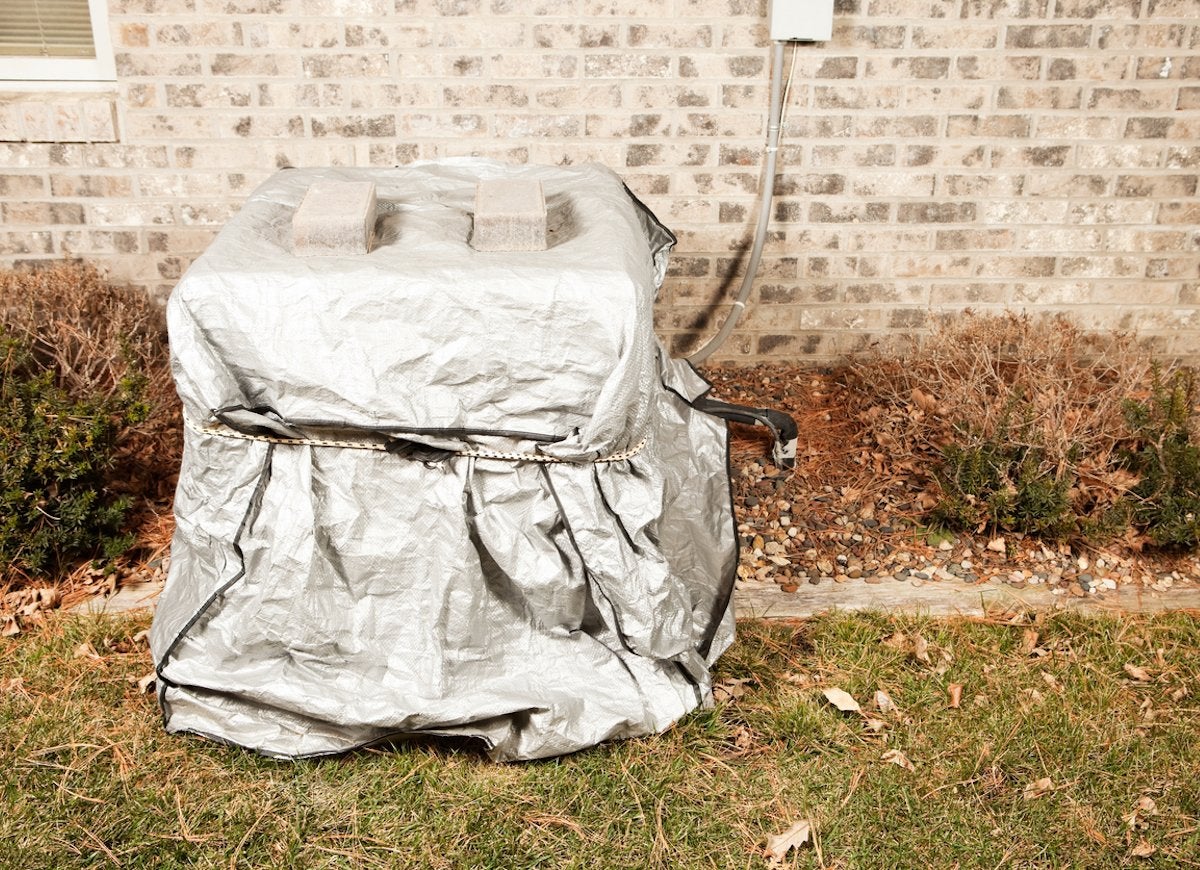
Photo: iStock
For as long as there have been air conditioning covers, people have debated whether they’re a good idea. Advocates love covers for the way they keep ice and debris out of the machinery, while detractors fear that covers can create ideal habitats for rodents and other pests that can nest within the wiring. Homeowners who live in colder regions may want to consider at least covering the top of their outside AC condenser unit with a tarp or sheet of plywood, even if they leave the rest of the unit exposed. Window air conditioning units, on the other hand, should be removed, cleaned, and stored in a safe place until they’re needed again in the summer.
Change Your Furnace Filter
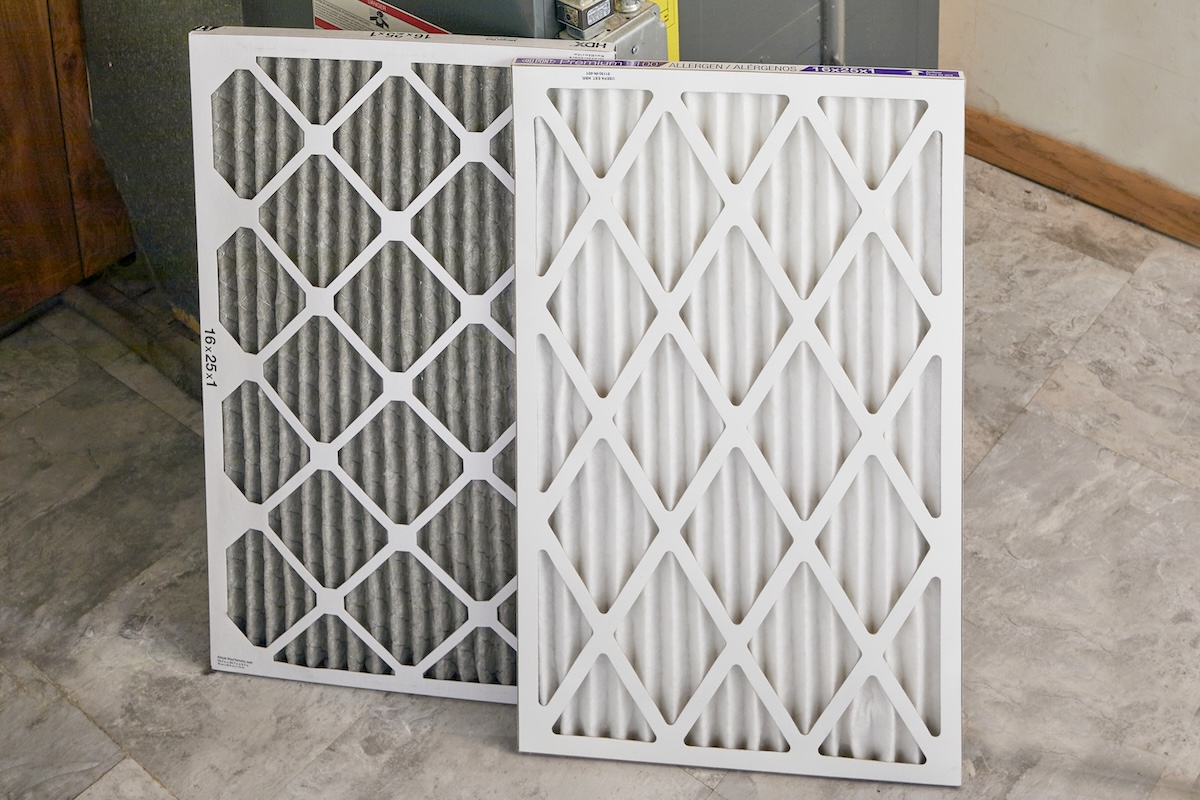
Photo: Tom Fenenga for Bob Vila
Give your HVAC system a fresh start with a new furnace filter. Furnace filters help maintain cleaner indoor air and keep a home heating system in good working order. Continue to change the filter every few months until you turn off your heat for the season.
Clean the Dryer Vent
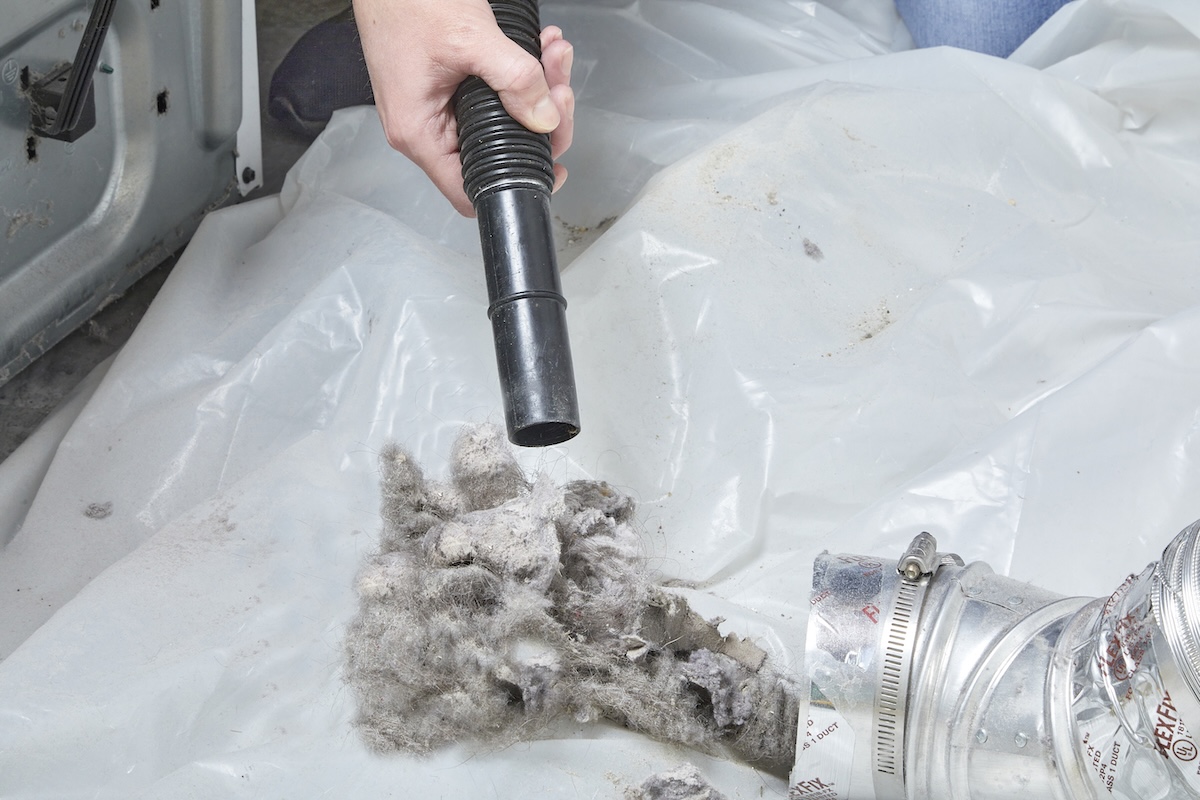
Photo: Tom Fenenga for Bob Vila
A clogged dryer vent can cause a perfectly good appliance to operate more slowly and less efficiently, but more importantly it poses a serious fire hazard. Clean out your dryer vent at least once a year to speed up laundry day, keep energy bills low, and protect your home from fires. You can do the job yourself with a vacuum cleaner and a long dowel or wire hanger (if you’re careful not to damage the vent), or hire a pro to do the job for you.
Clean the Carpets

Photo: Hispanolistic via Getty Images
Mold counts are on the rise at this time of year, exacerbating indoor allergies. Mount an effective defense by giving your carpets a thorough cleaning. Rent a carpet cleaner or hire a professional service to deep clean your carpeting, paying special attention to the bedrooms and high-traffic areas. If you’ve been thinking about removing your carpeting in order to breathe more easily, now might be the time to do it. Who knows—you may even have pristine hardwood floors hiding under those old carpets!
Stock Up on Ice Melt
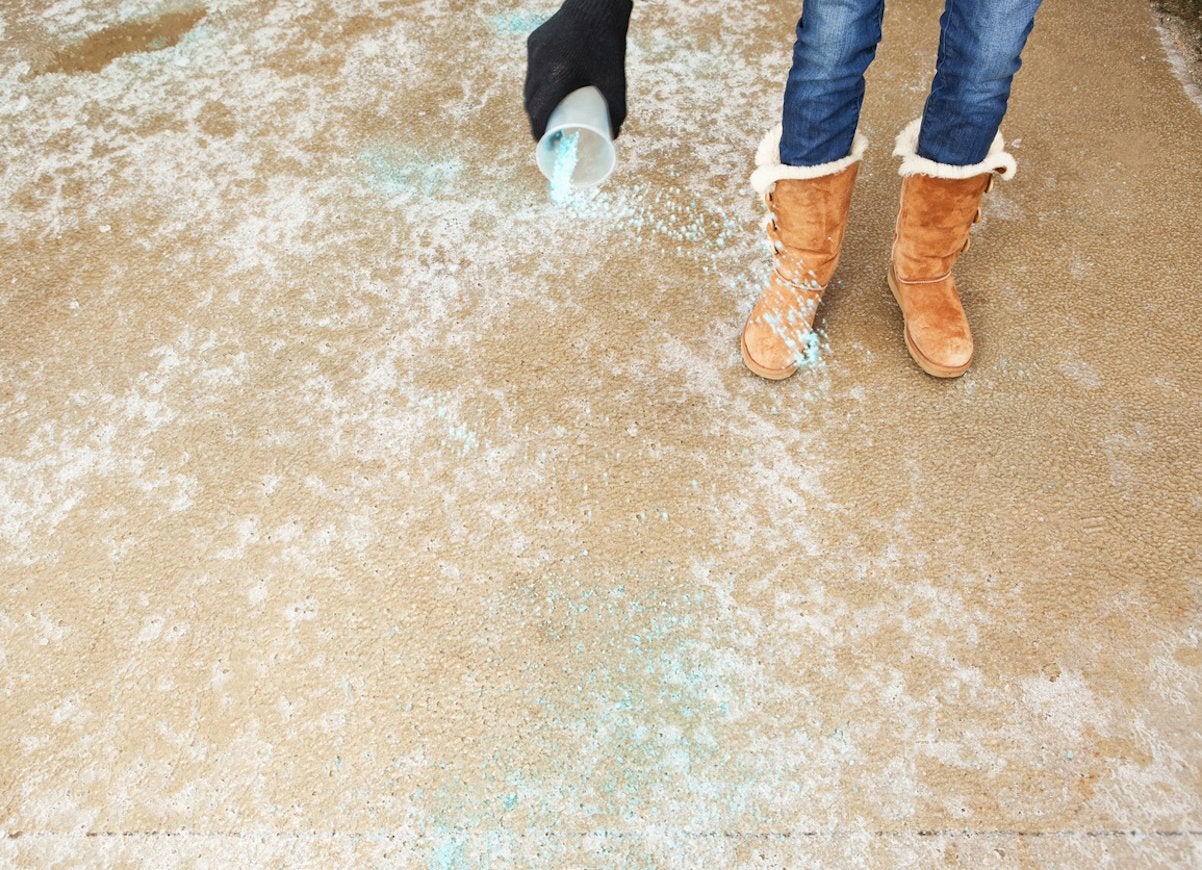
Photo: iStock
Don’t wait until the first snowstorm of the season to stock up on snow removal supplies. Buy an emergency stash of ice melt, salt, and sand (or kitty litter, in a pinch) to give you traction in slippery situations. Some home centers start selling these supplies as early as September and October, but if your local shop doesn’t carry them, you can certainly buy them from online retailers.
Bleed the Radiator

Photo: iStock
Have you ever cranked up the heat in late fall and waited for your radiators to circulate warm air through your home, only to discover that one or more of your radiators remains cold to the touch? If one radiator isn’t working when the rest of your system is operating normally, it’s usually a sign that air is trapped inside. This problem can be avoided by bleeding the radiators at the beginning of the season. To do this, first turn off the heat, then engage the bleed valve with a radiator key. Wait for the hissing sound to stop and a stream of water to pour from the radiator before closing up the bleed valve.
Repair Concrete
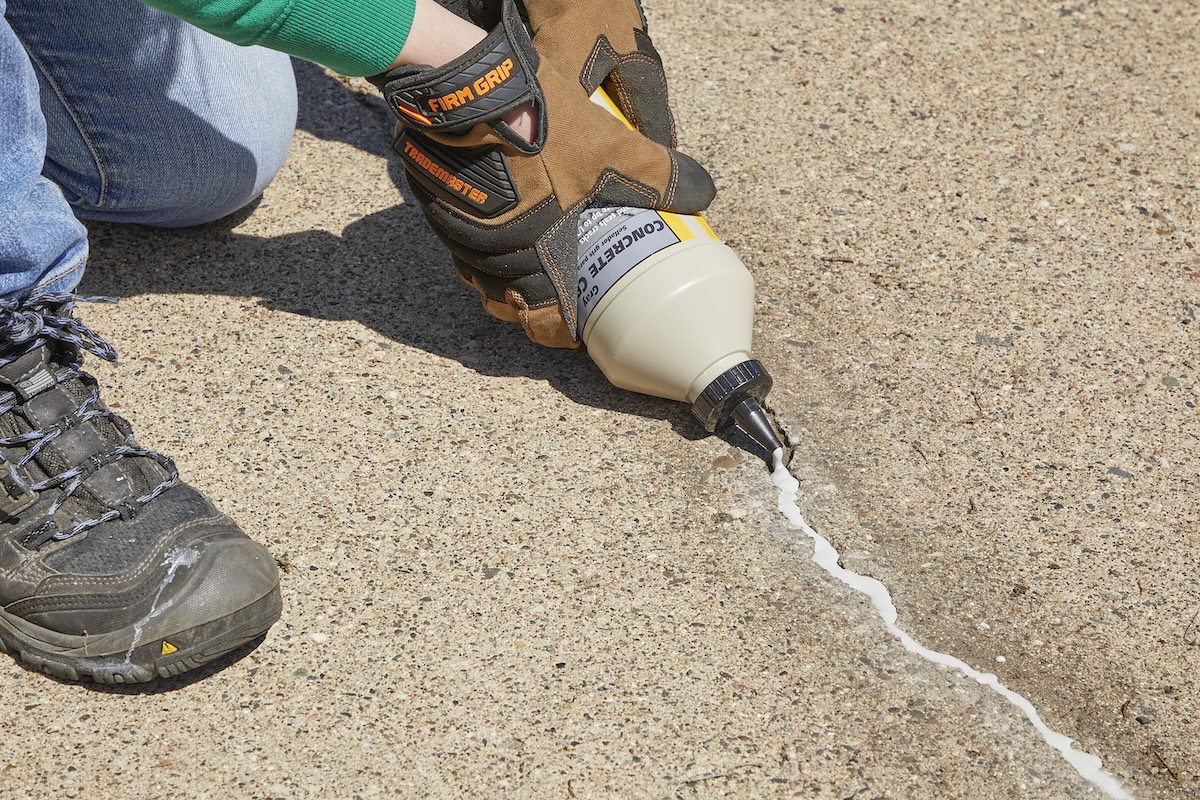
Photo: Tom Fenenga for Bob Vila
Cracks happen, and it’s important to take care of them before winter freezes make them worse. To repair cracks in concrete walkways, patios, or driveways, first clear away any dirt or debris from the damaged area, and then fill in the crack with masonry crack filler or concrete patch. Once you’ve filled the crack, smooth the edges of the new material with a trowel, and let the repair cure overnight.
Prepare for Emergencies
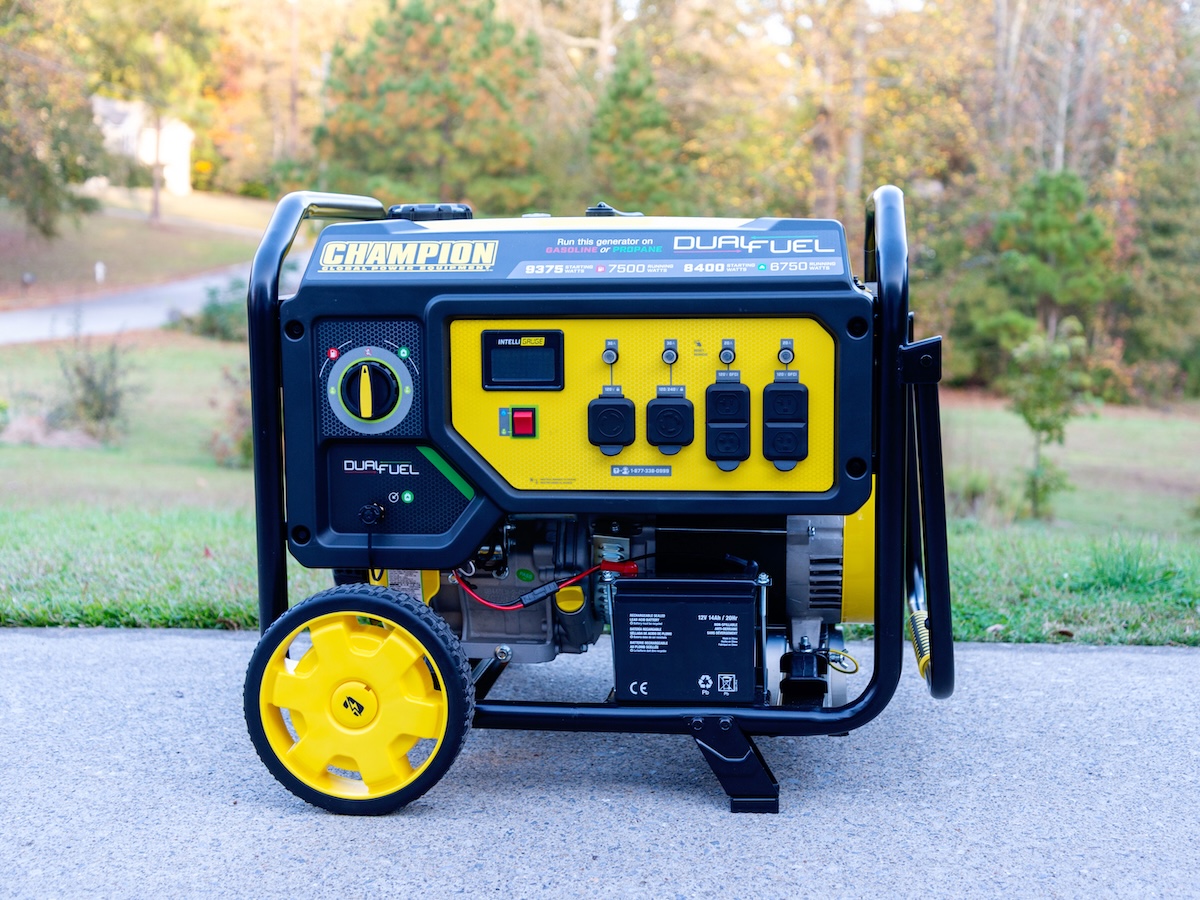
Photo: Mark Wolfe for Bob Vila
Be ready for the next big storm before it strikes with a “go bag” of emergency essentials, and give serious thought to buying a generator for the house if you don’t already have one. Generators are available in a variety of sizes and types, including portable generators and models that can be wired into a home’s electrical system. The larger the generator, the more power it provides. Before you make a purchase, be sure to determine which features and which fuel type best suit your household’s needs.
Test Run the Snow Blower
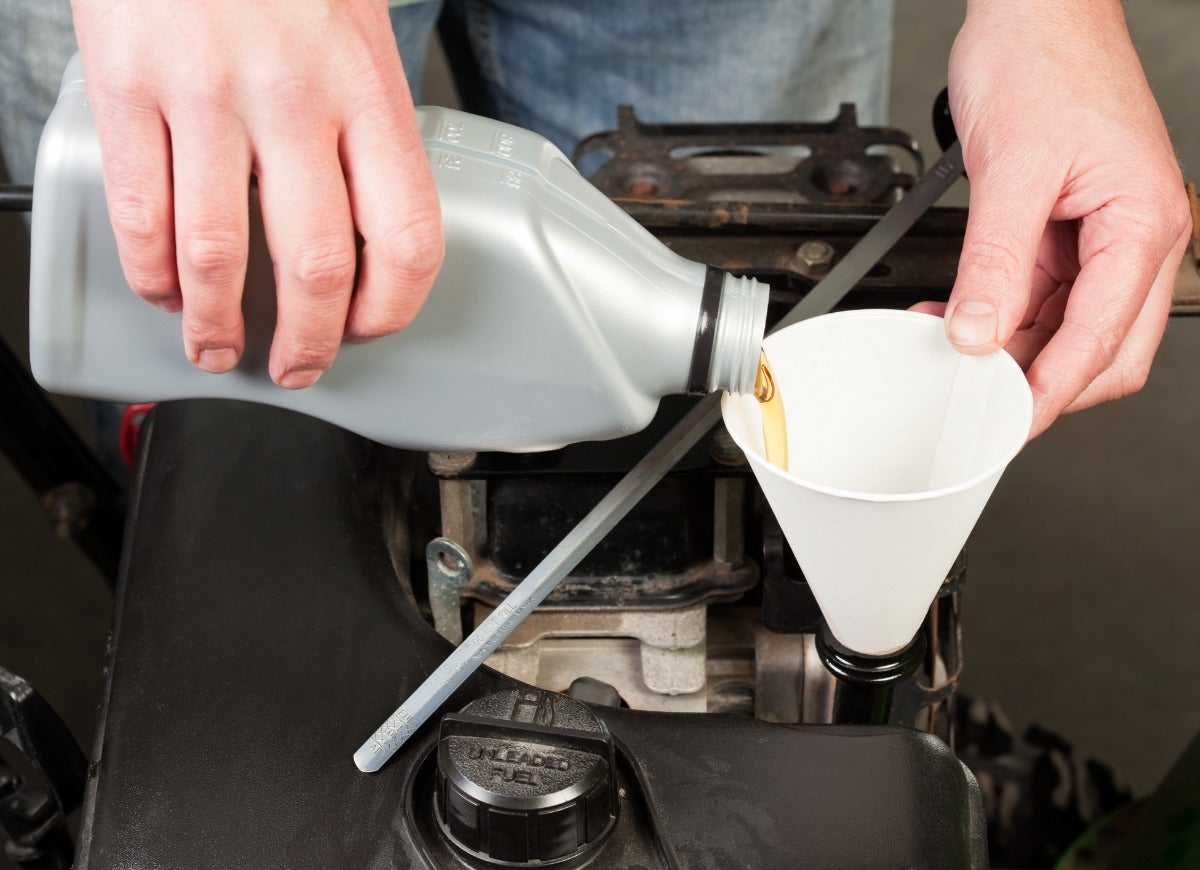
Photo: iStock
If you live in an area that sees a lot of snow and where a snow thrower or snow blower is a must-have, fall is the ideal time to make sure your equipment works. Have clean, stable gas at the ready, and then take the snow blower out for a quick test run. Fill the tank, start it up, and make sure all of the features work. Always be certain to have a spare spark plug on hand so you won’t be caught by surprise during a winter storm.
Swap Out the Doormat

Photo: Cavan Images via Getty Images
An easy way to get ready for cold, wet fall weather—and spruce up your entry while you’re at it—is to invest in a new doormat. With the return to school and a faster pace of life, fall is a time of year when many homes experience an uptick in foot traffic. A ragged, worn doormat may no longer do the trick, and it might not exude the welcoming vibe you desire. Because there are so many options in materials, sizes, designs, and styles, consider switching your doormats out seasonally so they won’t wear out as quickly.
Change Porch Light Bulbs

Photo: iStock
In the colder months, as darkness begins to fall earlier in the day, having adequate light on a front porch or entryway becomes even more important. If you’ve had the same porch light bulbs for a long time and they aren’t LEDs, think about swapping them out for new ones. After all, an entry light fixture isn’t much help when it doesn’t turn on.
Set Up Landscape Lighting

Photo: iStock
Landscape lighting elevates the look of a home’s facade and helps set a welcoming tone. With a range of available colors and options that include solar-powered landscape lighting, it’s easier than ever to line a walkway or driveway, or to spotlight trees and other landscaping or architectural features, creating a custom look for the exterior of your house.

Meet the 2025 Tools of the Year
After months of scouring the market and putting products through their paces, we’ve named the best of the best in new tools. There’s something for everyone, from veteran pros to average Joes.